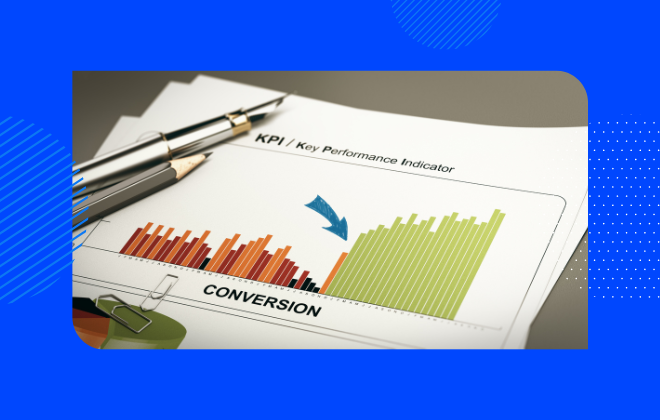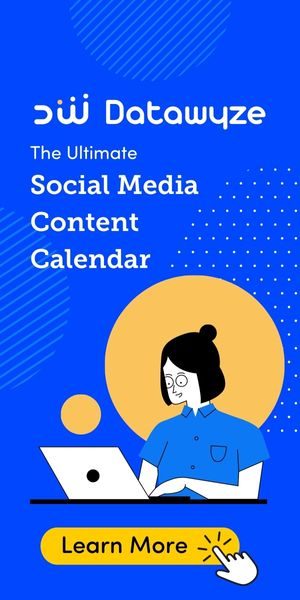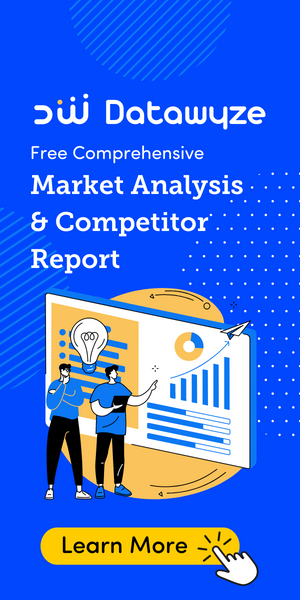Conversion Optimization and Its Benefits
Conversion optimization is the process of improving your website or landing page to convert visitors into leads or customers. The primary goal is to increase your conversion rate, which is the percentage of visitors who take the desired action; this can be anything from filling out a form to making a purchase.
Conversion optimization has several benefits, including:
- Increased revenue: First, by converting more visitors into leads or customers, you can increase your revenue.
- Lower cost per acquisition: Second, if you’re using paid advertising to drive traffic to your website, conversion optimization can lower your cost per acquisition (CPA).
- Better user experience: Third, a well-optimized website or landing page can provide a better user experience, leading to higher customer satisfaction and loyalty.
1. Conversion Rate Optimization
Conversion rate optimization (CRO) is a subset of conversion optimization that focuses on improving the conversion rate.
The following are some strategies for Conversion Rate Optimization (CRO):
- Use clear and compelling headlines: Your headline should clearly communicate the benefits of your product or service and encourage visitors to take action.
- Use high-quality images and videos: Generally, visual content can increase engagement and improve a page’s user experience.
- Create a sense of urgency: You can also use phrases like “limited time offer” or “limited stock” to create a sense of urgency and encourage visitors to take action.
- Simplify the conversion process: Last, you can make it easy for visitors to take action by removing any unnecessary steps or barriers.
2. Website Conversion Optimization
Website optimization is the process of improving your website to make it more user-friendly and conversion-friendly. Below, we outline several strategies for website optimization:
- Use a responsive design: Your website should be optimized for all devices, including desktops, tablets, and mobile devices, to ensure a consistent experience for users as they move throughout them during their day.
- Improve website speed: A slow website can lead to high bounce rates and lower conversion rates. However, you can improve your website’s speed by optimizing images, using a content delivery network (CDN), and reducing the number of plugins.
- Use clear navigation: Your website navigation should be easy to use and understand, with clear labels and information hierarchy.
- Add trust signals: Trust signals, such as customer reviews, security badges, and social proof, can all increase your trust and credibility1.
3. Landing Page Conversion Optimization
A landing page is a dedicated page designed to convert visitors into leads or customers. Below are some recommended strategies for landing page optimization:
- Use a clear and compelling headline: Again, your headline should clearly communicate the benefits of your product or service, encouraging visitors to take action.
- Use a clear call-to-action: Your call-to-action should be clear, prominent, and encourage visitors to take action.
- Use high-quality images and videos: Generally, visual content can increase engagement and improve the impact and user experience (UX) of a landing page.
- Simplify the conversion process: You should try to make it easy for visitors to take action by removing any unnecessary steps or barriers on the landing page.
- Use social proof: Social proof, such as customer reviews, are key to improving trust and credibility for your brand1.
4. A/B Testing
A/B testing is the process of testing two or more versions of a webpage to determine which one performs better.
When undertaking an A/B testing exercise, we recommend:
- Testing one variable at a time: To accurately determine the impact of a change, you should only test one variable at a time.
- Using statistical significance: To ensure that your results are reliable, you should use statistical significance to determine whether a difference is significant2.
- Testing regularly: A/B testing should be an ongoing process, with regular testing to continuously improve your conversion rate.
5. User Experience
User experience (UX) refers to the overall experience that a visitor has on your website or landing page.
The following are some tips for improving UX:
- Use a clear and consistent design: Your website or landing page should have a clear and consistent design, with easy-to-use navigation and clear calls-to-action.
- Use white space: White space can significantly help to improve readability and make your website or landing page look more visually appealing.
- Use simple language: Your content should be written in a simple and easy-to-understand language.
- Use responsive design: Your website or landing page should be optimized for all devices, including desktops, tablets, and mobile devices, so that users have a consistent experience across all of them.
6. Conversion Funnel
A conversion funnel is a journey that a visitor goes through from the initial contact to the final conversion.
The following are some tips for optimizing your landing page or website’s conversion funnel:
- Identify the stages of your conversion funnel: You should identify the different stages of your conversion funnel, such as awareness, interest, decision, and action.
- Identify the drop-off points: You should identify the points in your conversion funnel where visitors drop off and take steps to address those issues as a priority.
- Use retargeting: Activating a retargeting campaign can help to bring visitors back to your website or landing page and increase conversions.
7. Call-to-Action
A call-to-action (CTA) is a button or link that encourages visitors to take a specific action, such as filling out a form or making a purchase.
The following are some tips for optimizing the calls-to-action on your landing page or website:
- Use a clear and prominent button: Your call-to-action button should be clear, prominent, and stand out on your website or landing page, contrasting against any images or backgrounds.
- Use action-oriented language: Your call-to-action should use action-oriented language, such as “Buy Now” or “Download Now.”
- Use urgency: You can use urgency, such as “Limited Time Offer” or “Limited Stock,” to encourage visitors to take action.
8. Conversion Tracking
Conversion tracking is the process of tracking the actions that visitors take on your website or landing page. Below are some recommendations for optimizing your conversion tracking:
- Set up conversion tracking: You should set up conversion tracking, on a tool like Google Tag Manager, to track the actions that visitors take, such as filling out a form or making a purchase.
- Use Google Analytics: Similarly, a free tool like Google Analytics can provide valuable insights into visitor behaviour and help you identify areas for improvement.
- Use event tracking: Event tracking can help you track specific actions, such as clicks on a button or form submissions.
9. Analytics
Analytics can provide valuable insights into visitor behaviour and help you identify areas for improvement.
The following are some tips for using analytics to optimize your conversion rate:
- Go deeper with Google Analytics: Google Analytics has an extensive suite of measurement tools that can provide valuable insights into visitor behaviour, including bounce rates, conversion rates, and user flow.
- Use heat maps: Heat maps can help you identify areas of your website or landing page that visitors are clicking or scrolling.
- Use funnel visualization: Funnel visualization can help you identify the points in your conversion funnel where visitors are dropping off, which will give you direction on what updates to prioritize.
10. Conversion Optimization Strategies
Optimization strategies can help you continuously improve your conversion rate. The following are some tips for optimization strategies:
- Conduct regular A/B testing: A/B testing can help you identify the changes that have the greatest impact on your conversion rate.
- Use customer feedback: Customer feedback can provide valuable insights into what visitors like and dislike about your website or landing page.
- Use website analytics: Website analytics can provide valuable insights into visitor behaviour and help you identify areas for improvement.
11. Online Marketing
Online marketing can help you drive more traffic to your website or landing page and increase your conversion rate. The following are some tips for online marketing:
- Use paid advertising: Paid advertising can help you target specific audiences and drive more traffic to your website or landing page.
- Use search engine optimization (SEO): SEO can help you improve your search engine rankings and drive more organic traffic to your website or landing page.
- Use social media marketing: Social media marketing can help you engage with your target audience and drive more traffic to your website or landing page.
12. Digital Marketing
Digital marketing refers to any marketing activities that are conducted online, including online advertising, search engine optimization, social media marketing, email marketing, and more. The following are some tips for digital marketing:ariet
- Use a variety of marketing channels: Use a variety of marketing channels to reach your target audience online.
- Use targeted messaging: Use targeted messaging to reach specific segments of your audience and improve your conversion rate.
- Use analytics: Use analytics to track the performance of your digital marketing campaigns and identify areas for improvement.
13. Marketing ROI
Marketing ROI refers to the return on investment that you get from your marketing activities. The following are some tips for improving your marketing ROI:
- Set clear goals: Set clear goals for your marketing activities and track your progress towards those goals.
- Use analytics: Use native platform analytics tools to track the performance of your marketing campaigns and identify areas for improvement.
- Use optimization strategies: Use optimization strategies to continuously improve your conversion rate and increase your marketing ROI.
14. Lead Generation
Lead generation refers to the process of attracting and converting visitors into leads, which can then be nurtured into customers.
The following are some tips for improving your lead generation:
- Use targeted messaging: Use targeted messaging to attract specific segments of your target audience and improve your conversion rate.
- Use landing pages: Use landing pages to capture leads and provide them with valuable information. At Datawyze, we often use Unbounce as the preferred landing page builder for our clients.
- Use lead magnets: Use lead magnets, such as ebooks or webinars, to incentivize visitors to provide their contact information.
15. Conversion Optimization Tools
There are many tools available to help you optimize your conversion rate.
Here are some popular conversion optimization tools that we use:
- Google Optimize: Google Optimize is a free A/B testing and personalization tool.
- Hotjar: Hotjar is a heat mapping and visitor behaviour analysis tool.
- Crazy Egg: Crazy Egg is a heat mapping and A/B testing tool.
- Optimizely: Optimizely is an A/B testing and personalization tool.
16. Website Traffic
Increasing your website traffic can help you improve your conversion rate.
The following are some tips for increasing your website traffic:
- Use search engine optimization (SEO): SEO can help you improve your search engine rankings and generate more organic traffic.
- Use paid advertising: Paid advertising can help you drive more targeted traffic to your website.
- Use social media marketing: Social media marketing can help you engage with your target audience by starting conversations online.
17. Sales Funnel
A sales funnel is the process that a lead goes through from the initial contact to the final sale.
The following are some tips for optimizing your sales funnel:
- Identify the stages of your sales funnel: You should identify the different stages of your sales funnel, such as awareness, interest, decision, and action.
- Identify the drop-off points: You should identify the points in your sales funnel where leads drop off and take steps to address those issues.
- Use retargeting: Retargeting can help to bring leads back to your website or landing page and increase sales.
18. Customer Behaviour Analysis
Customer behaviour analysis refers to the process of analyzing visitor behaviour to identify areas for improvement.
The following are some tips for customer behaviour analysis:
- Use heat maps: Heat maps can help you identify areas of your website or landing page that visitors are clicking or scrolling.
- Use event tracking: Event tracking can help you track specific actions taken by visitors on your website or landing page.
- Use A/B testing: A/B testing can help you identify which variations of your website or landing page are most effective at improving your conversion rate.
Conclusion
Conversion optimization is a critical part of online marketing, and there are many strategies and tools available to help you improve your conversion rate and increase your ROI. By using A/B testing, optimizing your website or landing page, improving your user experience, and using analytics and optimization strategies, you can improve your conversion rate and generate more leads and sales for your business.
If you need help with conversion optimization or any other aspect of online marketing, Datawyze is here to help. We are a full-service performance marketing agency that specializes in helping businesses grow through effective online marketing strategies. Contact us today to learn more about how we can help you improve your conversion rate and increase your ROI.
References:
1. 77 Trust Signals to Increase Website Visitors and Conversions – Scott Baradell
2. A Refresher on Statistical Significance – Amy Gallo





